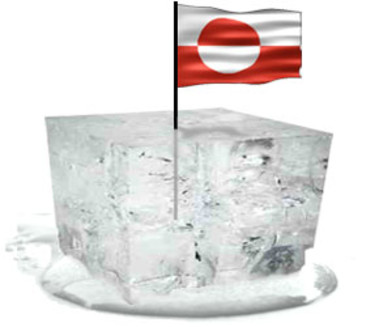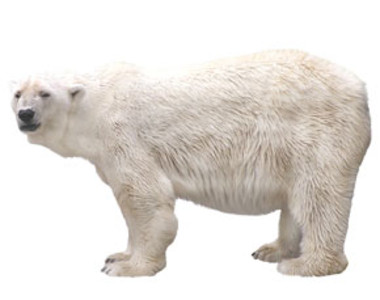Defrosting Greenland’s Image
brandchannel.com - September 25, 2006


The problem is, Sigur Rós is from Iceland, and while that little country revels in hip Arctic limelight, Greenland (population 57,000) is like the redheaded Viking step-cousin, relatively ignored in a frozen wasteland far away from the rest of the world.
Slowly, however, at a pace that must be maddening to those who are working to promote Greenland to the rest of the world, changes are taking place. A rather informal group of tourism and industry officials called Branding Greenland are working to help Greenland’s name emerge on the world map.
“Our strategy is very, very basic,” says Mads Nordlund, the PR and marketing coordinator of the Greenland Tourism and Business Council and member of Branding Greenland.
On a shoestring budget, Branding Greenland’s strategy seems to rely on a few key points: keep it simple, go slow and drive home what is most unique about the country.
“We want the world to know we exist and [literally] where we are,” says Nordlund, seemingly deadpanning.
“Ten to 15 years ago, people knew very little about us. People think there are polar bears wandering around in the street and people living in igloos.” The phone line crackles in the silence for a moment and one can almost hear him smirk. “Well, yes, there are, but we’re also a very modern society.”
“We want people to know [Greenland is] there and that you can actually go there,” he says.
He’s got a point. The country was even used as a sort of paragon of habitable isolationism in Rob Reiner’s classic 1987 film, “The Princess Bride,” when Wallace Shawn’s character, Vizzini, asks Andre the Giant’s Fezzik if he wants to remain “unemployed in Greenland.”
The Danish-born polyglot is hellbent on bringing a bit more positive attention to the country he calls home. In one of his previous jobs, Nordlund helped Danish artist Marco Evaristti paint an Iceberg red in early 2004 (apparently without harming the environment).
The country has even taken its iceberg show on the road. Literally. Last year, promoters shipped an iceberg (or at least as much of one as they could cram into a container) to a travel exposition in Copenhagen, and even used some of the ice in drinks.
Tourism also received a boost when UNESCO placed the Ilulissat Icefjord—a place where the Sermeq Kujalleq glacier “calves” icebergs by releasing them into the fjord before slowly making their way out to sea—on its World Heritage List in 2004.
The Branding Greenland group is also working on accessibility to the country. Currently, almost all non-charter flights must pass through Copenhagen Airport, which turns what could be about a three- or four-hour flight from the east coast of the United States into an all-day (or even two-day) affair, but this is changing.
“We’re opening a route from Baltimore that will run to Greenland once or twice a week from May through September,” says Jesper Kunuk Egede, a native Greenlander who works for the travel specialist, Greenland Travel, and is a Branding Greenland alumnus. “We’ll add more runs if it’s a success and add more connections, too.
“Plus,” he adds, “there will be a test flight in November where we will send a lot of Greenlandic runners to the New York City marathon.”
Who knew?
It’s not as pell-mell as it might sound. The US flights are part of the country’s effort to expand its tourist-luring horizons past its primary market, Denmark.
“As it is now, 85 percent of tourists [in Greenland] come from Denmark,” explains Kunuk Egede. “If [Denmark] were to fall on bad times…[expanding to other countries] wouldn’t hurt us so much tourist-wise.”
After ten years of what Kunuk Egede calls “sporadic” efforts toward luring tourists from various countries into visiting, he explains that the group is beginning to concentrate its efforts on three well-heeled countries: the United States, Germany and the United Kingdom.
“Our main target right now is retirees,” says Kunuk Egede. “What do you call them? Golden something?”
This gets balanced out by promoting extreme sports events, like next year’s Arctic Team Challenge.
Nordlund also adds that Greenland is seeing a rise in middle-aged couples with children, and “more and more DINKs” (double income, no kids).
“Greenland might not be the first place you want to go,” adds Nordlund. “It’s for people who have seen a lot and want to see something unique.”
Getting the companies who make up the Branding Greenland project to work together is the first order of business for Louise Lee Leth, who chairs that group’s steering committee as part of her work for Greenland’s foreign affairs department.
“This might mean that Royal Greenland [a fishing company and Greenland’s biggest employer] helps Air Greenland to produce marketing materials,” she says, proving that synergy is found in funny places in a land where dog sledding is still a vital part of the economy.
The relatively laconic pace that the country’s small size (in population, not area) forces onto their marketing efforts isn’t all bad, and even allows them to correct errors.
“Some places have been overrun and people are getting tired of tourists,” says Egede, “but in general, people are welcoming them.”
With his iceberg-painting days behind him, public relations and marketing coordinator Nordlund says hitting the kind of home runs that would cause a difficult-to-manage surge in tourism isn’t on the agenda anymore.
“If we can create a small awareness of our little corner of the world,” concludes Nordlund with a dash of Arctic modesty, “we’ll be happy.”
Joe Ray is a food and travel writing specialist based in Europe. He can be reached via his Web site, www.joe-ray.com.